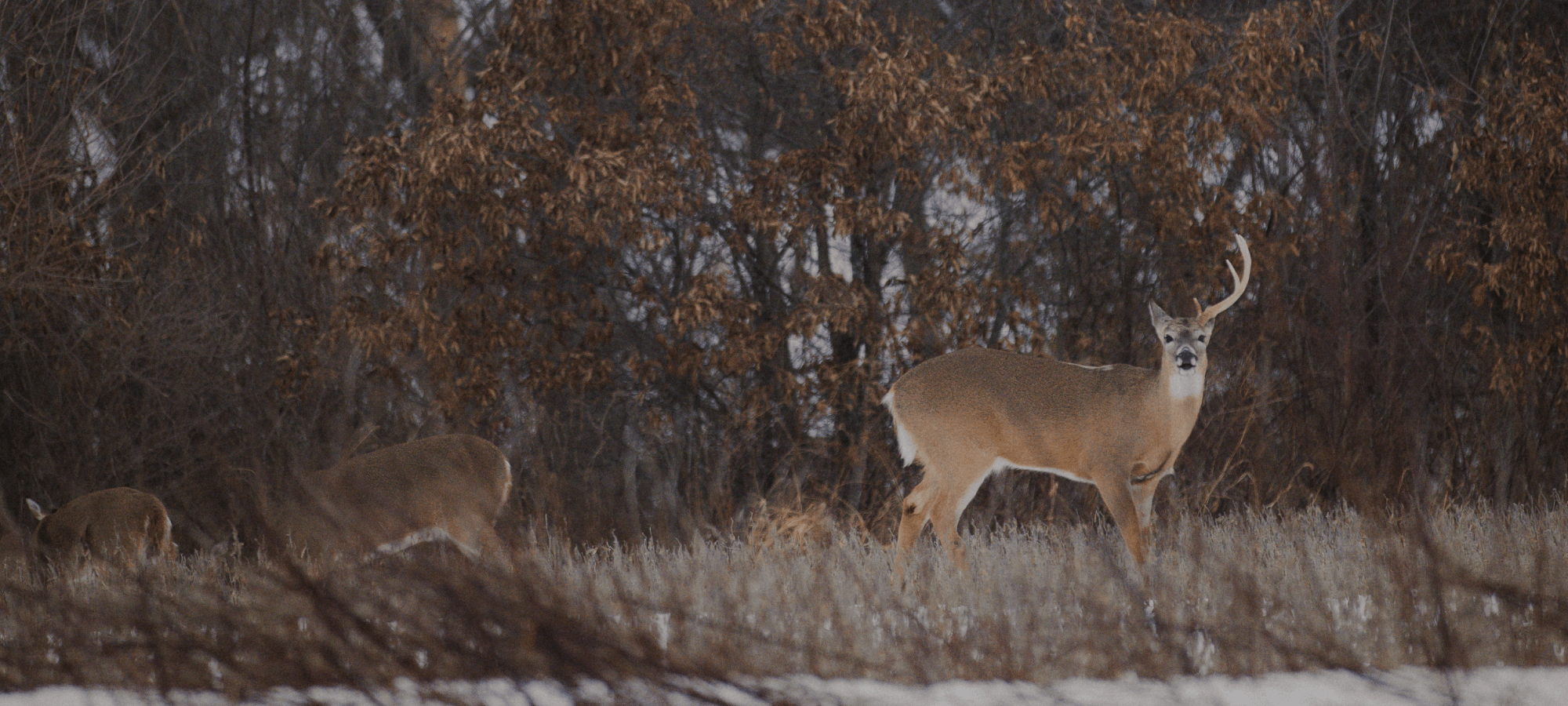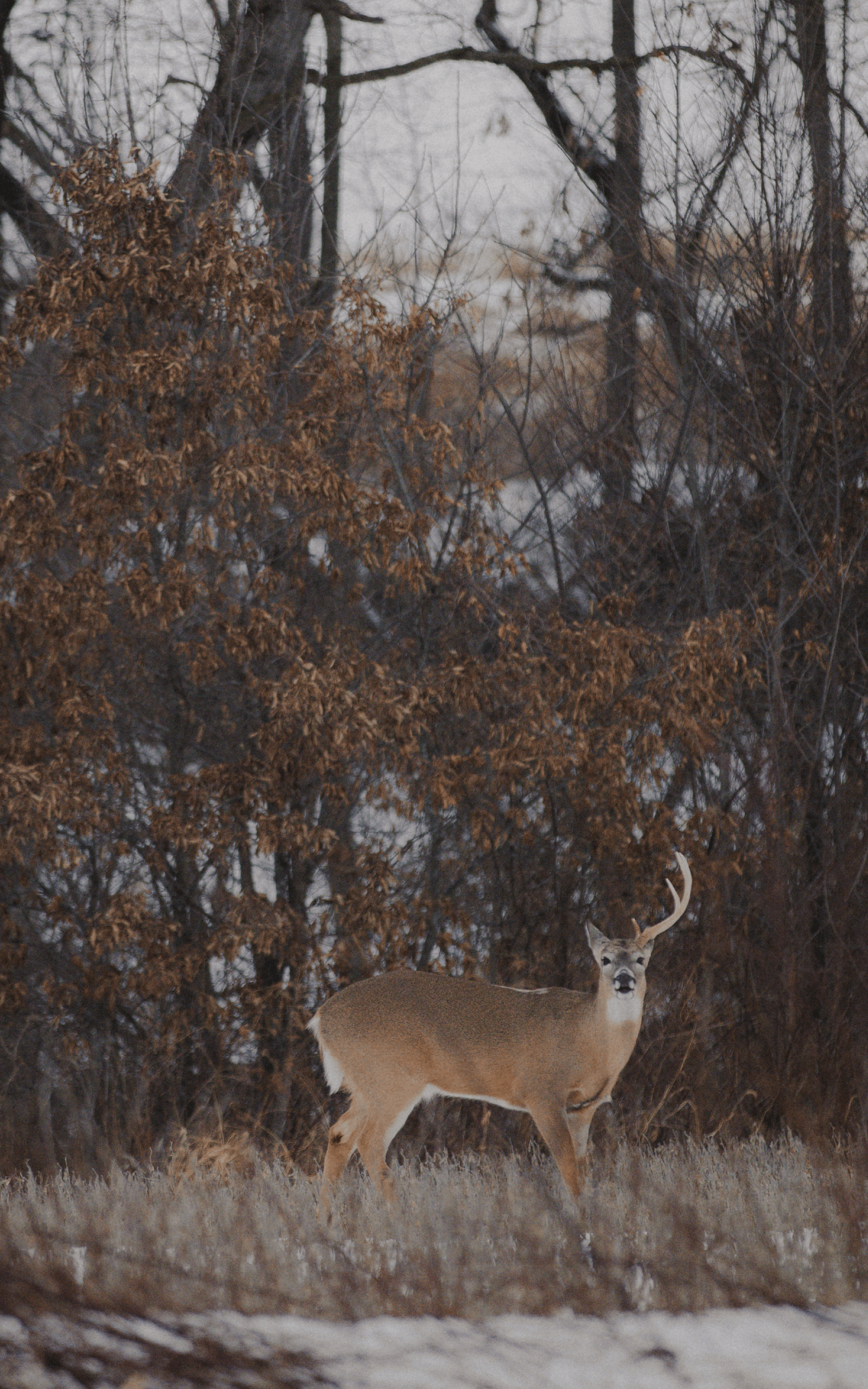Last fall, they were weapons of critical importance in the competition among bucks for breeding privileges. Now, with the rut over, they’re nothing more than useless, dead bones sticking to the buck’s head, waiting to be cast so the antler growth process can start over again. But what causes antlers to be cast? When does it occur? And why do some deer seem to drop early while others carry antlers into late winter or perhaps even early spring?
The first two of these questions are pretty easy, and researchers across the country have provided some clear answers. However, the last question is largely unanswered, although we do have some pretty good guesses.
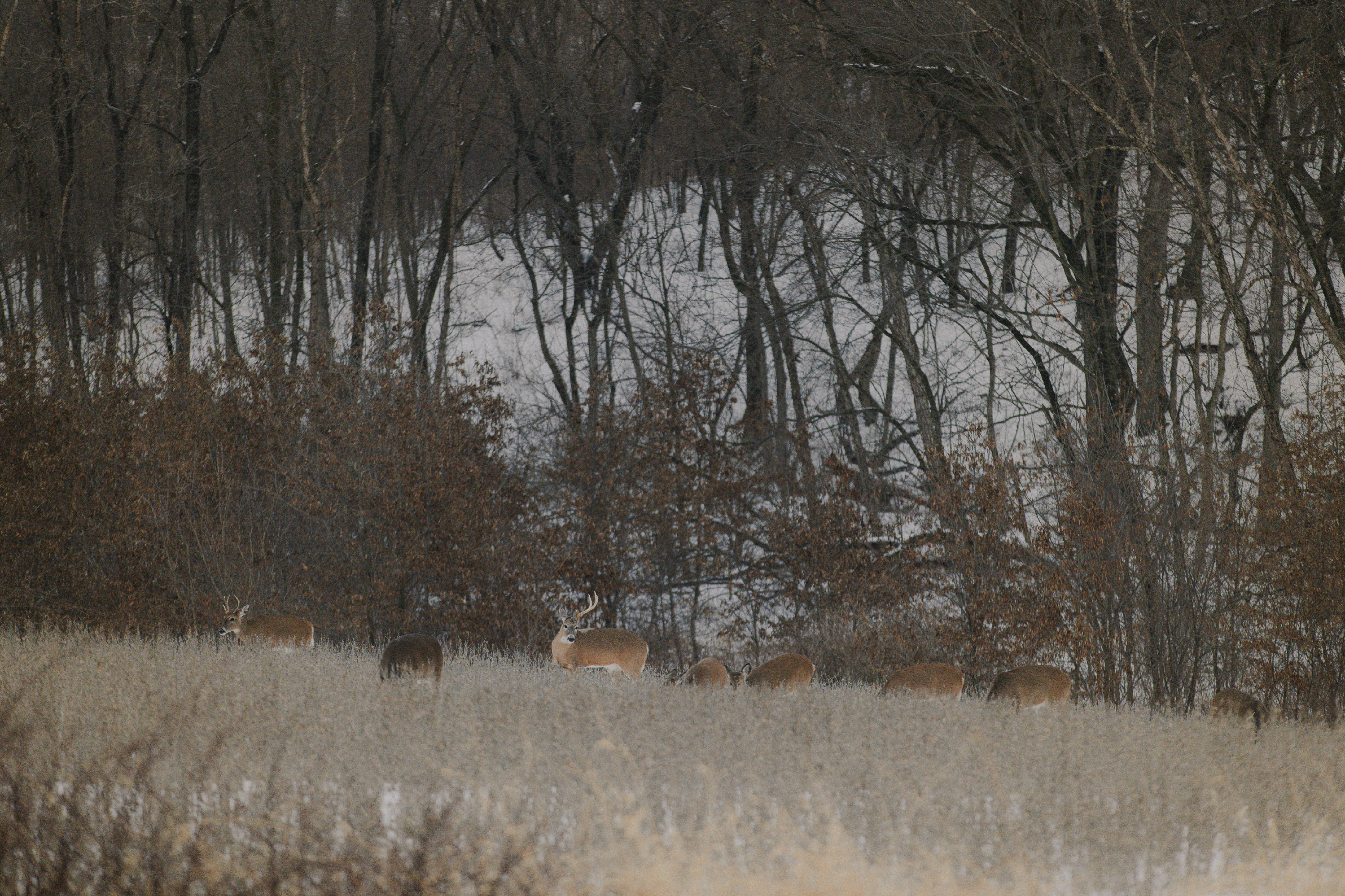
From the time of Aristotle, and perhaps before, it has been known that the cycle of antler growth, maturation, and casting were somehow tied to the buck’s testes. We now know that a complex mix of hormones influences the antler cycle, but the most important regulator is testosterone, which is produced in the testes. High levels of testosterone in the blood cause the maturation of the antler, trigger velvet shed, and maintain the antler connection through the rut. However, following the rut, testosterone levels fall and it is this decline in testosterone that ultimately leads to casting of the antler.
Although some writers in the early 1900’s have suggested that bucks may promote casting by thrusting their antlers into the mud or knocking them against trees, it is clear that bucks are quite unaware of the impending event. The falling antler may even startle them.
Often a buck drops both antlers on the same day, sometimes only minutes apart. More rarely, he may carry one antler for a week or longer. Up to a few days prior to casting, the antlers are firmly attached. In fact, it may be almost impossible to dislodge a buck’s antlers on one day, and then have the antlers ‘pop off’ on their own only a couple of days later.
The process through which antlers are cast actually resembles a type of self-amputation. In response to declining testosterone levels, specialized cells called osteoclasts become activated. These cells specialize in bone resorption, and literally eat-away the bone at the base of the antler. The roughness, or bumpiness, of the base of a cast antler is due to the action of these cells. The base of a freshly cast antler normally is bloodless, although the pedicle from where it detached may become reddened with blood before it scabs over. Almost immediately, a layer of skin starts to grow over the pedicel from the zouter edges, and within a week or two the pedicle is completely healed over and waiting for the start of new antler growth.
Most antler casting occurs in late-December through February, but some bucks may keep their antlers longer, perhaps as late as late-March. Some of the differences in casting dates likely are due to differences in timing of the breeding season in different parts of the state. However, even within a region there can often be differences in casting time among individuals. It is here that our understanding of factors leading to the timing of antler drop becomes cloudier.
From our studies, we know that individual bucks tend to drop antlers at about the same time each winter – provided conditions don’t change. However, changes in social status or nutritional condition can affect the timing of antler cast. In northern areas of the United States where the period of antler casting is early and relatively short (from mid-December and to late-January), older, larger, and presumably dominant bucks cast antlers earlier than their subordinates. In these areas the rutting period is intense, but short, and bucks leave rutting condition early in ‘anticipation’ of harsh winter weather. Interestingly, some studies in northern states have indicated that the timing of antler casting can be delayed by providing high-quality supplemental forages. Apparently an intense, stressful rut combined with increased food limitations during winter cause a rapid decline in body condition in northern bucks. Testosterone levels drop early, particularly in rut-stressed dominant bucks, resulting in early antler drop.
In Midwestern states, where antler casting extends from January to late-March, white-tailed bucks with large antlers generally retain them longer than bucks with small antlers. Similarly, in Mississippi, researchers have reported that antler casting peaks from February to April and that small-antlered bucks cast antlers earlier than large-antlered ones. Our studies with captive deer at the University of Georgia indicate a very strong relationship between dominance status and order of antler casting, with subordinate bucks casting antlers before dominant animals. Age of the bucks did not appear to be a factor.
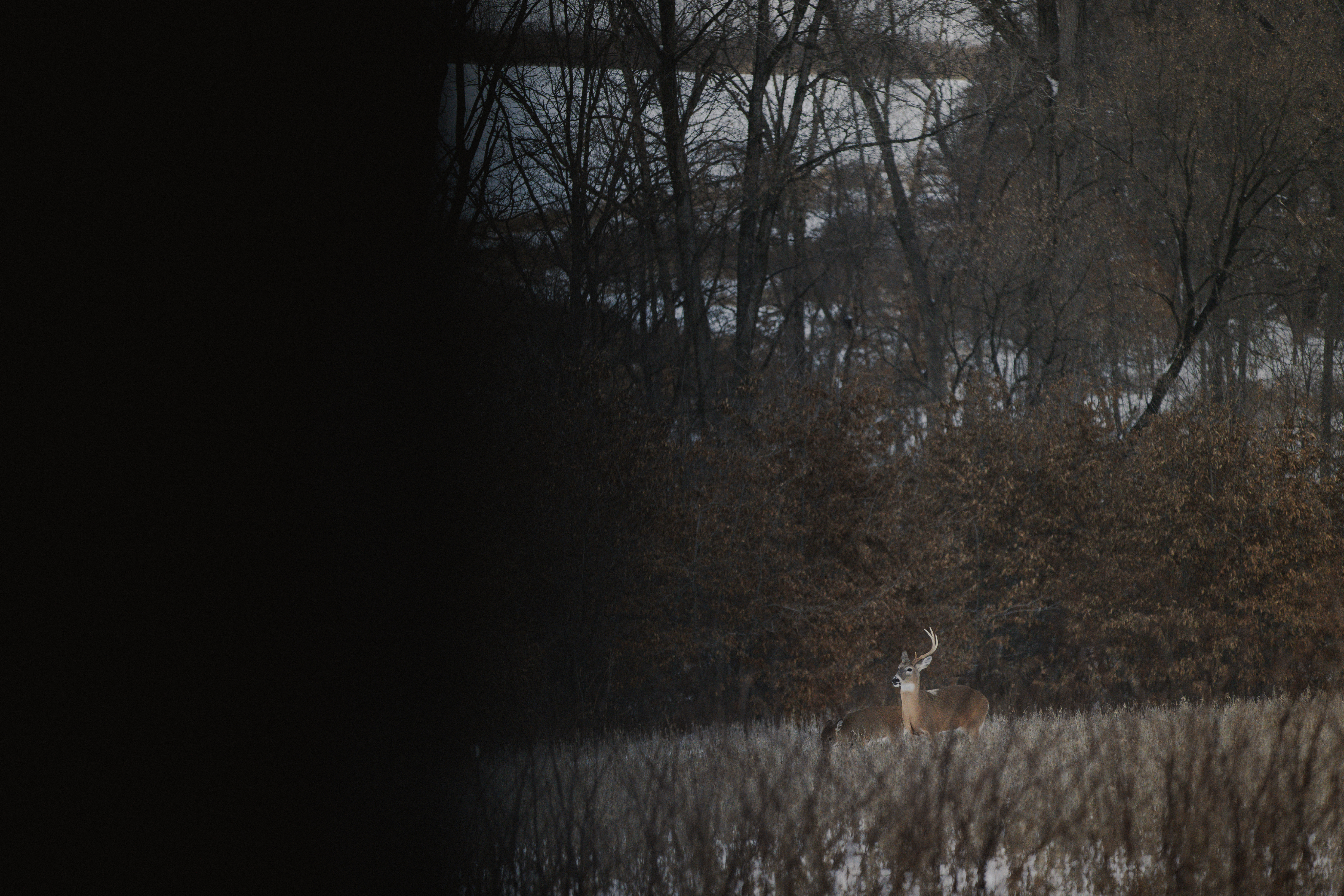
So, why do dominant deer in the South tend to keep their antlers longer, in contrast to Northern deer? Likely the difference is related to differences in the length of the rutting period as well as differences in winter nutrition. In southern states, it is not uncommon for some does to come into estrus after the peak of the breeding season. Some does may not have conceived during their first estrus cycle and others may just be naturally late breeders. Those female fawns that become reproductively active during their first year also tend to breed later than mature does. Therefore, a few late-breeding does would keep bucks in rutting condition. In addition, winter nutritional stress in many areas of the South is much less severe than in northern states, so bucks can maintain body condition throughout the winter. Both of these factors will allow bucks to maintain elevated testosterone levels, which will in turn delay antler casting.
Hunting for shed antlers can be an enjoyable way to spend a late winter day and can double as a scouting trip for the upcoming season. Every cast antler is a sure indication of a buck that survived the hunting season and likely will be available, and perhaps bigger next year. But what else can we learn from cast antlers?
Antler bases can provide us with some clues about the health of the buck that dropped them. In most cases, the bases of healthy bucks will be convex (i.e., slightly rounded). However, the antler bases of many older bucks, and some unhealthy or stressed bucks will be convex (i.e., somewhat depressed). Therefore, you can likely expect that the antlers of the buck that sheds antlers with convex bases will be larger the following year, whereas those with convex bases may not. Similarly, you likely can expect that the odds of survival to the next season will be greater in those bucks that shed antlers with convex bases.
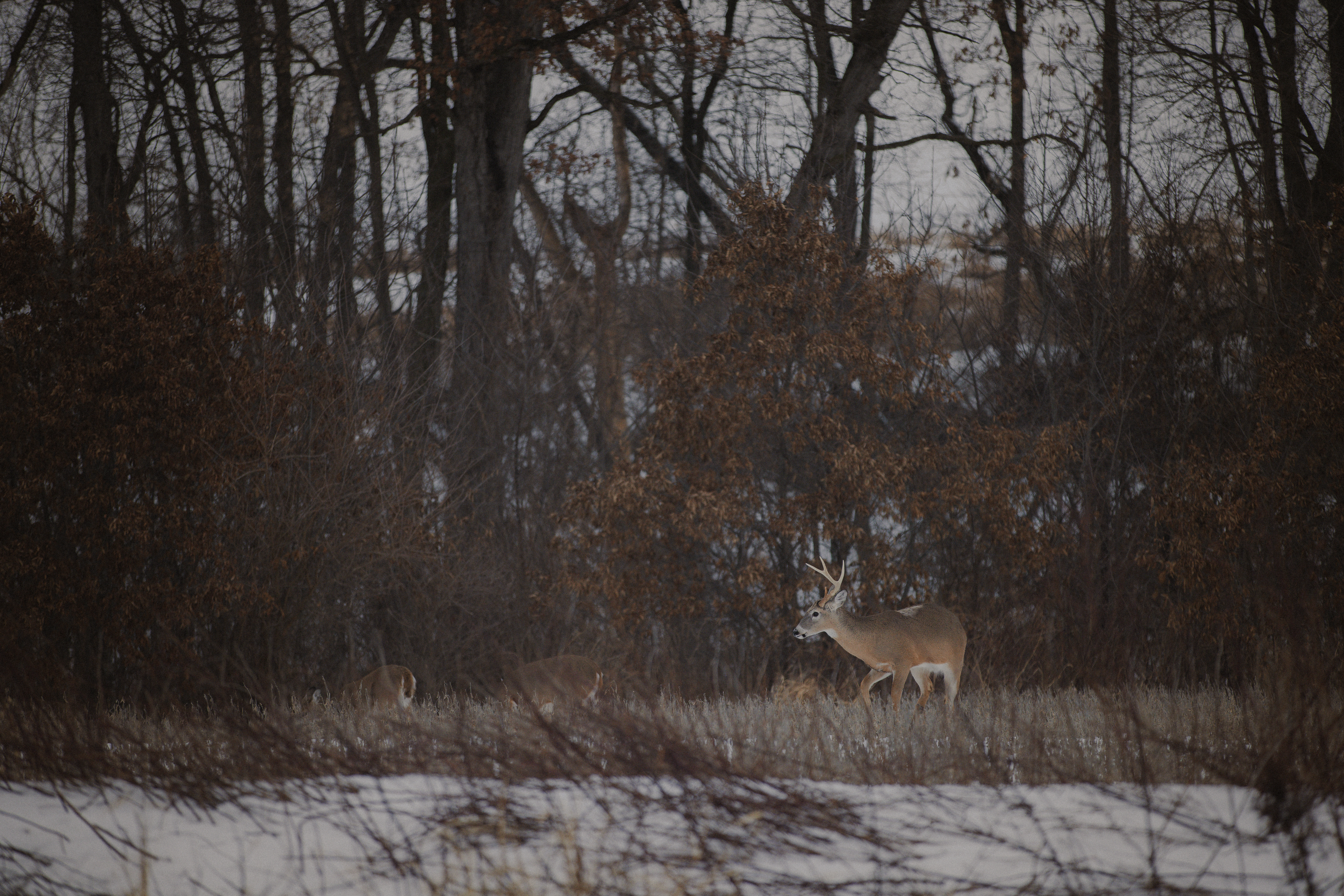
Typically, the abscission layer forms at the base of the antler where it joins the pedicle. However, on occasion these abscission layers may form further down the pedicle, and as a result, part of the pedicle bone, or in some extreme cases part of the cranium itself, can be cast with the antler. These unusual occurrences are due to some type of injury near the base of the antlers (typically due to fighting) that results in an infection known as a cranial abscess. The bacterium responsible for the infection is known as Trueperella pyogenes. Pus pockets in the skin surrounding the antler base is a sure sign of infection. The severity of these infections can range from very mild to severe. In many cases the infection may heal with no long-term effects on the deer. However, it is not uncommon for the infection to cause abnormal casting of a portion of the pedicle, and in most cases that pedicle will produce an abnormal antler in subsequent years. In extreme infections, the bacteria may penetrate the cranium and produce a brain abscess leading to death of the animal. Interestingly, research by Brad Cohen at the University of Georgia as indicated that the prevalence of cranial abscesses can vary markedly among deer populations, and appears to be related to differences in the virulence of differing strains of the bacteria across the landscape. In other words, cranial abscesses may be relatively common in some areas while being rare in others.
